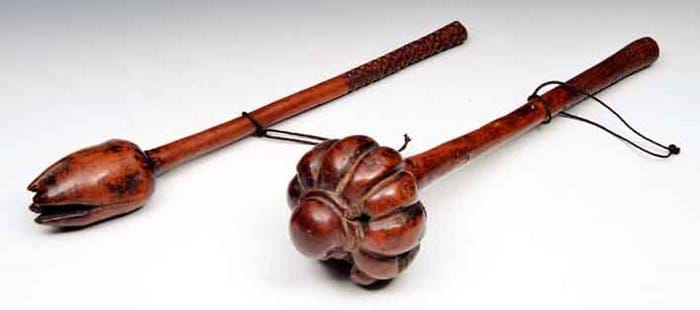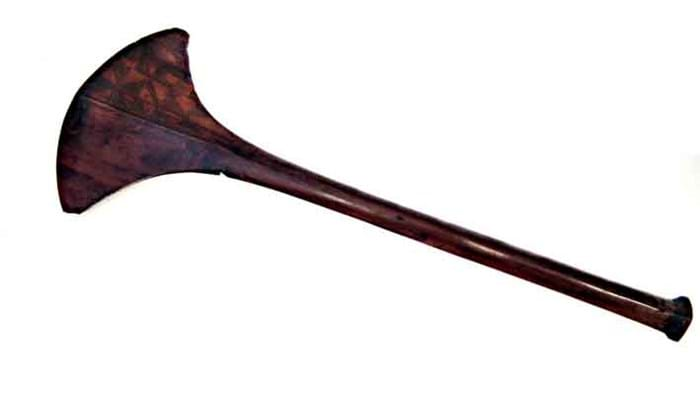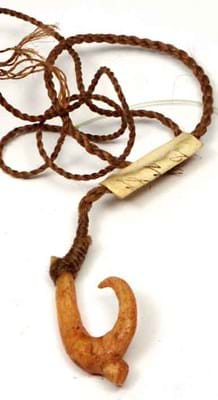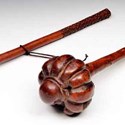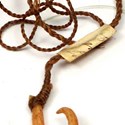The Fijians in particular were experts at all types of club warfare and best known for the short round-headed throwing club or ulla. Each Fijian warrior would go into battle with at least three or four tucked into his belt.
Two different examples were offered as part of the Gentleman's Library sale at Mallams (20% buyer's premium) in Oxford on October 30-31.
A typical example with a lobed shaped head (ulla tavatava) sold for £1400 but a much rarer club known as an ulla soba with a deep cross cut to the head and carved decoration to the grip, took £9500.
Fan Club
The dui or fan club was used by Fijian warriors to deliver blows with a sharp edge. It's also a scarce form and the example estimated to bring £100-200 at Peter Wilson (20% buyer's premium) of Nantwich on November 27-28 sold to a Netherlands collector for £7800.
The club, one panel carved with a diamond pattern, the other plain, had been given to the vendor in about 1955 by a friend who had collected various items while travelling.
Maori Mere
Among the most identifiable weapons of the Maori are the mere, traditional close-combat weapons typically made from nephrite jade. The material was highly prized and the slow and arduous process of manufacture ensured they were high status objects often passed down through generations.
The example offered by Brightwells (17.5% buyer's premium) of Leominster on October 30 was part of a collection of late 19th century Aboriginal and Maori artefacts collected in the first half of the 20th century.
As with most examples, a hole had been drilled through the handle to allow for a wrist cord (originally made of plaited flax but here a replacement).
Estimated at £150-200, it made £2600 and is on the way back to New Zealand.
Inuit Fish Hook
Meanwhile an Inuit fish hook was the key element of a small collection of objects sold for an unexpected £1200 at the Gentleman's Library sale at Mallams in Oxford on October 30-31.
Used for ice hole fishing, the carved marine ivory or bone hook retained its original sinew (animal tendon) cord to which was attached an old pen and ink label reading: From the Captain Perry Expedition.
This could be a reference to Robert Edwin Peary (1856-1920), the American explorer who made many visits to the Arctic, bringing five Inuit men and a boy back from Greenland in 1897. Put in the custody of the American Museum of Natural History in New York, most soon died of tuberculosis.

